
Dec 9, 2019 | Columns, Conspiracy Theories
By Kat Andersen (V)
Although conspiracy theories have become pervasive in current times, this phenomenon is nothing new. Spanning the course of human history, conspiracy theories have facilitated the social, political, and religious divisions that invade societies. Their dynamic nature allows them to spread quickly and last wherever they take hold. They can explain unanswered questions, rationalize foreign ideas, destabilize powerful people, and undermine widely accepted beliefs, all in a fascinating and overwhelming manner. Often times, the more bizarre and outlandish a theory is, the more accepted it will be.
Think about conspiracy theories that plague our lives today. Whether you believe them or not, these ideas are deeply ingrained in how we understand the events and ideas around us. For example, two common theories– the possibility of extraterrestrial life in Area 51 and the idea that climate change isn’t real– have attracted news headlines, circulated social media, and (in the case of Area 51) served as inspiration for high school dances and Halloween costumes. However, there are countless others which add to the giant network of theories we have access to on a daily basis.
As I researched popular conspiracy theories, I realized that with every headline, I became more and more intrigued. From a lab in Alaska that’s controlling our minds, to 109 Lochness Monster sightings at Flathead Lake, Montana, to the Joplin Tornado of 2011 being created by the military, I realized that there are explanations for virtually every topic you could imagine. Some of these theories were outrageous, but others were quite convincing. I even found myself wondering if some theories could, to some extent, be true.
To find out why conspiracy theories seem so easy to believe, I did some research on the psychology behind them. According to a study done by the Association for Psychological Science, there are three important motives that drive us to believe a theory. The first is an “epistemic” motive: the idea that people need understanding and control over things. Thus, we are inclined to believe a conspiracy theory if it reduces “uncertainty and bewilderment.” The second is an “existential” motive, the idea that people want to have control and security. In order to do this, we use conspiracy theories to “exert control over the environment.” The last motive is social. Humans want to uphold their positive public image; therefore, conspiracies are attractive because they allow “blame for negative outcomes to be attributed to others,” rather than the group or individual (1).
Back to my initial question. Why do we believe in conspiracy theories? They provide us with comfort and control, and they help bridge the gap between what we know and what we don’t. They are consuming because they create a network. The further you dig, the more connections you see, and the more you find yourself accepting the rationale behind them. With these reasons in mind, it’s entertaining to scroll through the “35 Most Popular Conspiracy Theories”, or even to create your own. Then, try to understand why you chose to associate yourself with certain theories over others.
However, while lots of theories are light-hearted and amusing, some are malicious and inherently false. These include claims that 9/11 and the Holocaust didn’t happen. In the internet age, technology offers its users anonymity, as well as readily available information through social media and news platforms. Conspiracy theories have the potential to be much worse than in previous years, and the possibility of being misled or fed false information is increasing.
So, as we move into the future, and as conspiracy theories become more and more compelling, make sure to question not just if a theory is plausible, but also its intentions and impact.
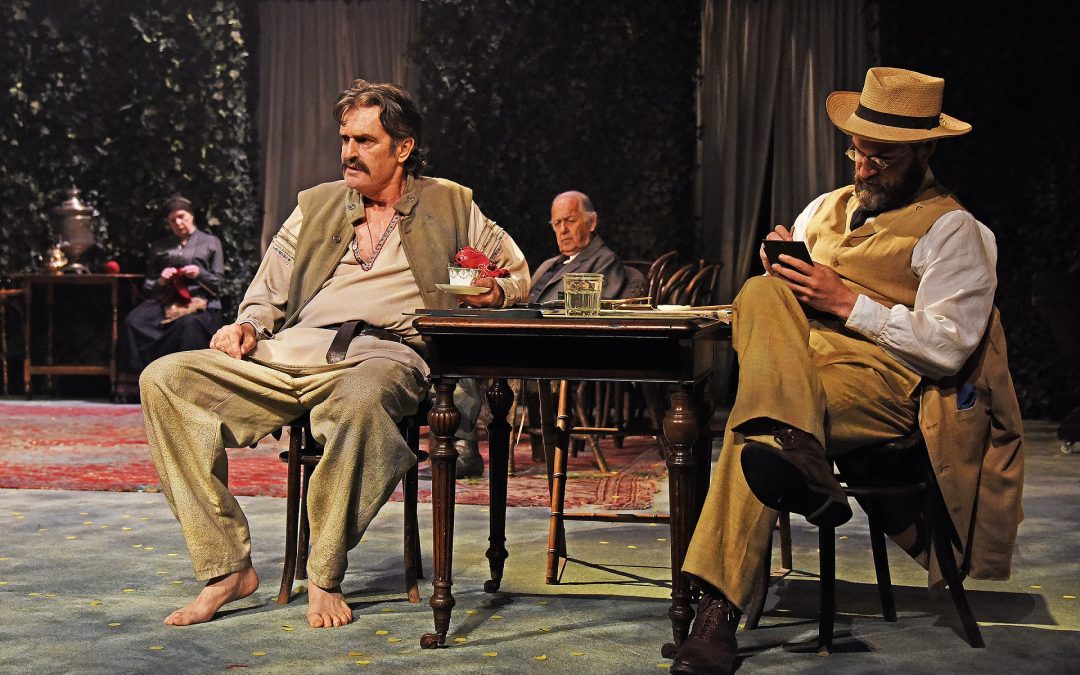
Dec 9, 2019 | Columns, Music
By Rhea Kapur (V)
Existentialism has dominated my last few weeks. What does that mean, exactly? What even is existentialism? That question in and of itself, my friends, presents its own existential crisis––and that should tell you something about just how much it has been on my mind lately. According to the Stanford Encyclopedia of Philosophy, existentialism is the pursuit of what “further set of categories… [are] necessary to grasp human existence.” Let that sink in. Deep, I know. And, of course, we teenagers should all be familiar with the “existential crisis,” a term that is now so ingrained in American culture that it is considered colloquial, dare I say the content of memes. Just to be clear, though, an existential crisis is a moment where we question the meaning of life––or, conversely, contemplate how life has no meaning.
I love to explore different aspects of the Slavic cultures and Russian language. Russian literature offers nothing if not some of the best reading, and many great Russian writers were existentialists. A couple of weeks ago, I was reading Uncle Vanya, one of Anton Chekhov’s plays. There’s a line in there that immediately stopped me in my tracks. Helena remarks, “What a fine day! Not too hot.” And Voitski (Vanya) responds, “A fine day to hang oneself.” If that’s not existentialist, I don’t know what is. Yes, Vanya perhaps takes it too far, but the sentiment is there. In my Russian Literature HIRT, we’re reading Anna Karenina, a great novel by Leo Tolstoy, and a friend of mine recently gave a presentation on Tolstoy’s spiritual crisis. You guessed it: by the end of his life, he was a die-hard existentialist. And, in my American Literature course right now, we’re reading “Bartleby the Scrivener”––perhaps one of the strangest short stories of all time––which presents a perfect case study in absurdism, existentialism, and even nihilism.
For me, all of this inspired a Spotify playlist, which I have lovingly entitled “sediment of existentialism.” In curating this playlist, I had to think about what has had me feeling so existentialist (the literature, obviously, and maybe the crushing amount of work). How could I elicit those same feelings again at a random 2:00 AM, when I really need them?
I came up with two answers. One is slow, melancholy music: “Apocalypse,” “Nothing’s Gonna Hurt You Baby,” “Affection,” and “K.” These are slow-burning gems from the band Cigarettes After Sex, perfect for those late nights after you return from a memorable night out, or even while you type out one last essay before our upcoming break. Lana Del Ray, with her unique voice and powerful lyrics, has some stars too: “Love,” “Brooklyn Baby,” “Off to the Races,” and “Born to Die” (that title has me convinced that she, too, is an existentialist) are some of my favorites. All of these songs showcase raspy, unique, and contemplative voices, and they really get my existentialist gears turning, transporting me to entirely new worlds.
The other mini-genre in my existentialist music consists of songs that I’ve associated with a memory. Now, hang with me, folks, we’re getting deep here. What are those sentimental songs for me? “Supermarket Flowers” by Ed Sheeran is one that immediately comes to mind. I know I may have denounced pop in my last column, and Ed Sheeran would definitely qualify as a pop artist, but this song is exceptional; it’s poignant, and above all it’s beautifully sung. Sheeran wrote it to cope with losing his grandmother, and that loss is simultaneously raw and crystal clear in his voice. As someone who recently lost mine, I can really connect to it. Listening, I remember my dadi, yes, but I also think about death, the meaning of death, and where we go afterwards. Where is the “home” that Sheeran refers to? What quantifies “a life that’s been loved” and lived, as Sheeran sings? How can we measure that?
I have lighter songs, too: the last songs of the night that I’ve danced to (“I Lived” by OneRepublic), a Beatles piece a faraway friend of mine used to play me on his guitar (“Blackbird”), or the favorite song of a sister I never had (“The Monster” by Rihanna). All of these songs––the happy, sad, and in-between––make me contemplate life and its meaning. You could say they elicit those existential crises.
My advice for creating your own existentialist playlist? Find those songs that matter to you – the ones that make you reason, reflect, and reminisce. Find those melancholy songs to which you wallow, or the upbeat songs to which you sing along at the top of your lungs, shaking out your hair and smiling ear to ear (“Story of my Life” by One Direction, anyone?). If you need inspiration, give “sediment of existentialism” a listen. Maybe while reading Dostoevsky (another Russian existentialist––sigh) over break, as I will be. You never know what kinds of existential moments you might find yourself in.
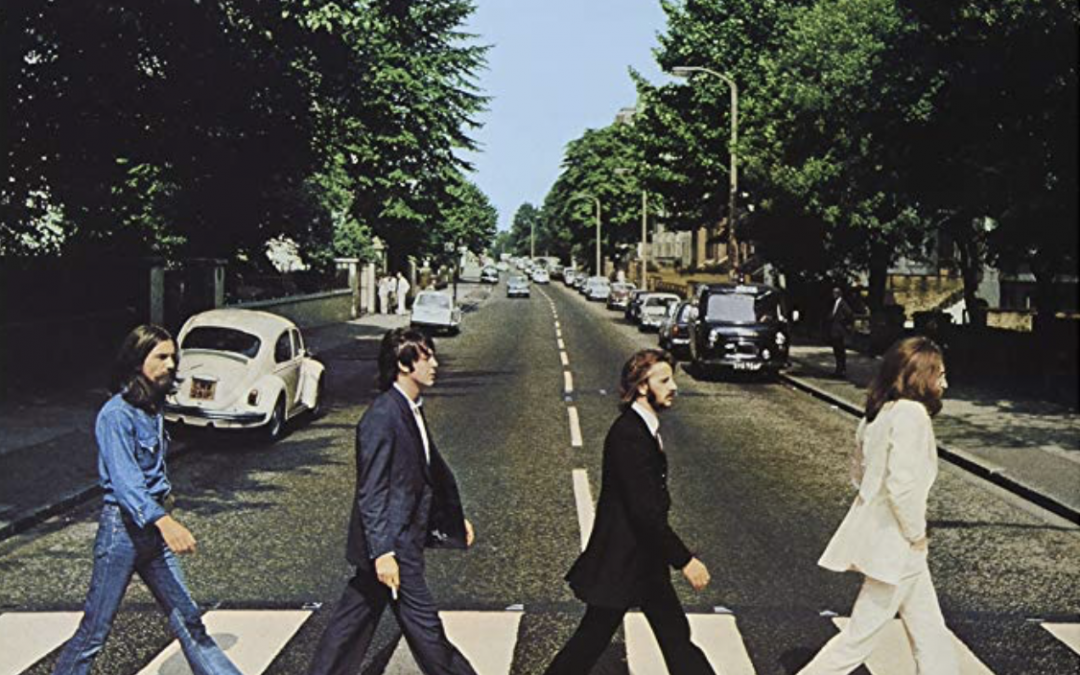
Oct 18, 2019 | Columns, Music
Rhea Kapur (V)
Even though I dislike the mainstream, formulaic pop that constantly fills Spotify’s “Today’s Top Hits” Playlist, I keep an eye on the charts. Billboard Hot 100? The top 200 albums? Rolling Stone’s Top 100? iTunes Top 100? You name it. Imagine my surprise when, just a few days into October, I saw not Taylor Swift’s Lover at the top of the Billboard 200, but The Beatles’ Abbey Road, as it was just past the album’s 50th anniversary (Sept. 26th).
I went through a brief Beatles phase this summer, after rediscovering Ferris Bueller’s Day Off and the “Twist and Shout” cameo – the song was on repeat for weeks, so much so that Spotify would start recommending it in every single one of my personalized playlists. I mainly listened to their popular works – “Twist and Shout,” of course, “Hey Jude” (the beautiful lyrics of which, by the way, were written by Paul McCartney to comfort John Lennon’s son Julian during his parents’ divorce), “Here Comes The Sun,” and “Blackbird.” But, last week, after noticing the Beatles’ unusual appearance in the Billboard 200, and reminiscing about my summer obsession, I was intrigued. So I put in headphones, closed my doors, and blasted Abbey Road, Remastered 2009. The Beatles’ swan song. The famous last album. The goodbye. And I have to say – it was an experience.
My favorite song by far was “Carry That Weight,” one of the only songs on the album recorded with all four members. It’s dark, it’s deep, it’s striking. A bit of history: recorded as one with “Golden Slumbers,” an eerily reassuring, hopeful, and vulnerable track in and of itself, the song was written by Paul McCartney but it interestingly featured vocals from all four Beatles. The sheer pressure the song conveys (heavy trumpets, “weight” being repeated, etc. – and that abrupt ending) mirrors the Beatles’ own struggles at the time: inter-group rifts and management troubles with Apple plagued them. Fellow juniors, I bet you can relate to this pressure – I know I’m already feeling it. Take comfort in knowing that the Beatles, too, went through seemingly hopeless times – but of course, theirs was probably much more significant, as the band ended up breaking up at the end. However, those times overall turned out to be great and remembered from today’s perspective, and ours will too – have faith. The weight, in fact, will be “carried a long time.”
A couple more gems from Abbey Road – “You Never Give Me Your Money,” featuring a beautiful, poignant piano base, “Oh! Darling” with McCartney’s wrought, almost painful, but undeniably powerful vocals, and of course, “Come Together” with its unique instrumental backbone – quiet, but with all the more noticeable guitar and beats in the back. I highly recommend those. And check out the 2019 mix of Abbey Road – it has come out in honor of the 50th Anniversary!
To continue my “classics~vibes” music pattern, I was reminded of Elton John – another great artist I constantly listened to this summer after watching the movie in his honor, Rocketman, with some friends. And what a movie that was. It was the first time I really listened to and recognized Elton John, and in theaters, too – the music was just all-encompassing and consuming in conjunction with the story of his eventful, bright-as-a-supernova life. Hearing the song “Rocketman” blasted, I could sense the mixed feelings and, of course, the Ray Bradbury influence – he wrote a short story in the 1950s entitled “The Rocket Man” upon which the song lyrics are heavily based.
Elton John wrote about the most obscure things – the “blue jean baby” in his hands in “Tiny Dancer” (a classic, by the way – simply a beautiful song), or “Spanish Harlem” in “Mona Lisas and Mad Hatters” (one of my favorite songs of all time, and one of Elton’s own favorites, too. I mean, the emotion in it is unparalleled). Honky Chateau is definitely a must-check-out album. But, I digress. Overall, Elton manages to make each and every one of his songs striking and beautiful. He’s simply a genius – not only with the jazz piano, which backs almost all of his songs, but with the lyrics and the voice, too. I’m eternally envious of those fortunate enough to have witnessed his genius in person, in his prime (Mr. Keating, looking at you!).
So I highly, highly recommend checking out Elton John and Abbey Road. Listen to them alone, in a quiet space, or even on a rainy morning bus ride, but with the music blasting as loud as you can bear – and really feel the music. Let it transport you away from the generic pop for a minute and take you back to the roaring 60s and 70s, when people, places, and music had unique character. Anyway, I’ve been listening to these two as I write this column, and it’s been the perfect vibe. I guarantee you, you’ll be hooked.
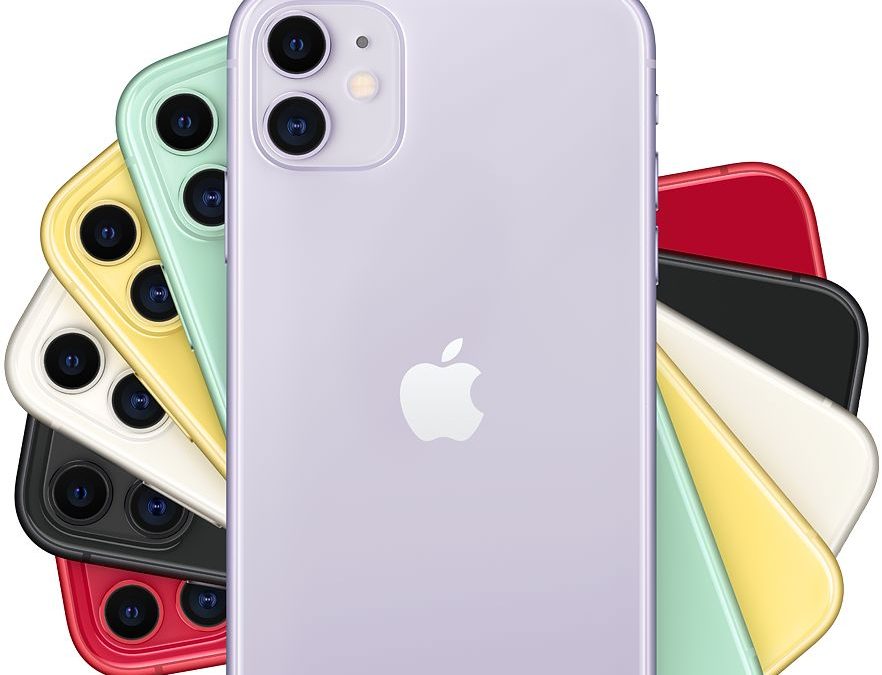
Oct 18, 2019 | Columns, Technology
Aneesh Karuppur (V)
Some interesting things transpired in the tech world over the summer, and even more during the start of the school year.
Perhaps the most talked-about issue was the release of Apple’s new products in September, the most buzzy of which is the new set of iPhones. These include the iPhone 11, the iPhone 11 Pro, and the iPhone 11 Pro Max. The feature everyone seems to be talking about are the new cameras; on the iPhone 11, there is now a second camera for enhanced zoom. On the iPhone 11 Pros, there are now three cameras: one for normal shots, one for closer ones, and one for an ultra-wide picture. The cameras also feature a new Night Mode, a concept likely pilfered from the previous “camera phone,” the Google Pixel. Night Mode uses software tools to brighten your image without making it grainy. It draws out details from all the black spots of your picture. Portrait mode has been updated, as has the camera app itself. It is now easier to look at and use. iPhones have long had 4K video (ultra-high-definition) abilities, and Apple is now advertising enhanced editing tools to go along with it. Finally, Apple is also selling “slofies” with the new batch of iPhones, which are essentially slow-mo selfie videos. I would consider the camera upgrades a reasonable selling point, but the “slofie” aspect is frankly not very compelling.
Other upgrades from last year’s phones include the improved glass casing and a faster chip that features more machine-learning capabilities. This means that the phone can better optimize various tasks and generally run faster during demanding tasks such as games and Schoology uploads. The new iPhones also come in some nice new colors, and have improved screens for quality and color accuracy.
All of this is well and good, but for me, it does not really add up to a compelling proposition. In fact, these last two years of iPhones have been fairly underwhelming. My recommendation is that, unless you have an iPhone 7 or older, or you really want the cool new camera features, this absurdly expensive update is not worth your money. Next year’s iPhones are rumored to have new designs and potentially 5G, the faster mobile data standard that some Android phones already have. For now, just upload the new iOS 13 on your existing phone and sit this update out.
Apple also announced some incremental upgrades in the Apple Watch Series 5, but I still recommend a Series 3 or a Series 4 if you can find one, as they have better value. Additionally, iPadOS on iPads can now better mimic a laptop operating system. To get a maximum bang for your buck, I recommend the regular iPad (or iPad Pro for artists) with a Logitech Crayon stylus (or an Apple Pencil for artists). These tablets should serve as good note-taking and art tools. Finally, Apple mildly updated their MacBook Pros by adding the TouchBar mini-touch screen, as well as some processor bumps. This last one gets a lukewarm recommendation from me—I am hoping that Apple will respond to recent leaps made by other manufacturers in the laptop industry and further improve their product.
Now that I have Apple’s news out of the way, let’s talk about Microsoft’s new line of Surface products. The Surface Laptop 3 is more of an incremental upgrade, but there is finally USB-C in the laptop. This port can connect to multiple displays, drives, or any other device through the use of a dongle instead of one individual port.
Microsoft also updated the Surface Pro 7 tablet with similar upgrades as the laptop. The new device here is the Surface Pro X, which is a clear iPad Pro copycat. It is more of a laptop than the Surface Pro 7 is, and comes with a harder keyboard. I still believe that a Dell XPS 2-in-1 would meet the needs of just about every Windows user except the extremely involved artist, so I don’t have a whole lot to recommend from Microsoft; they are charging Apple-level prices while Dell’s XPS’s are offering similar quality for significantly less money.
Finally, Samsung has announced its Galaxy Note 10 phones, which offer the best performance an Android phone can offer while still remaining svelte and making good use of the built in stylus (S-Pen). Personally, I am not a fan of Samsung devices, and the camera hole in the display is, in my opinion, a worse design than Apple’s notch. Regardless, the Note 10 is an impressive phone, and if you are willing to pay over a thousand dollars, it’s a solid buy.
That just about wraps it up for this issue’s tech column. I hope it helped you make more informed tech-buying decisions. Stay tuned for the next issue!
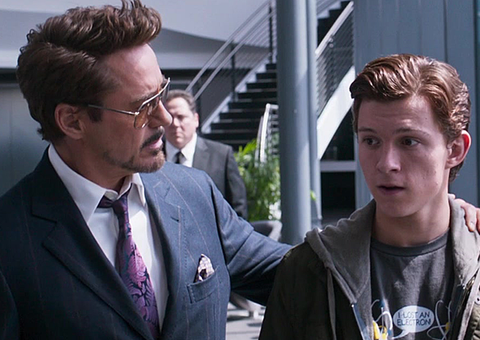
Oct 18, 2019 | Columns
Alex Kaplan (V)
WARNING: This article contains spoilers for Avengers: Endgame and Spider-Man: Far From Home. If you don’t want to read spoilers, don’t read on.
This past July, I saw the release of the second Spider-Man film from the Marvel Cinematic Universe––Spider-Man: Far From Home. The film was a continuation of where the universe left off after Avengers: Endgame. The world is clearly still reeling from the loss of Iron Man in the battle against Thanos at the Avengers Headquarters, and the people are looking for a new symbol of peace. Nobody feels this pressure more than Peter Parker (played by Tom Holland), Tony Stark’s protege and high-school spider-teenager. He is hounded by the press and Nick Fury, and to top it all off, Stark left Peter unfettered access to his military-grade weapons system, EDITH (“Even Dead I’m The Hero”). The story follows Parker as he deals with this pressure and interacts with Mysterio, a walking fake-news metaphor. The circumstances around the film raise a lot of interesting moral questions, including whether or not it is acceptable to deceive people for their own comfort, and if it is fair to interrupt a hero’s daily life to recruit them for a mission. Chief among these questions is this: is it fair to lay the hopes of the world on a teenage hero?
Throughout the film, Peter Parker struggles to balance his life as a normal teenager with his superhero persona, which leads to some perilous situations. Peter spends the majority of the film on a field trip across Europe, where he tries to ask out his crush, MJ. While on a bus through the countryside, Peter realizes that the glasses Tony Stark left for him house EDITH, and he attempts to use it to remove an embarrassing photo from another student’s phone. Instead, he fails to exercise proper precaution and nearly kills a member of his class with a drone strike. Needless to say, Peter does not have the proper experience necessary to operate military-grade artificial intelligence technology. He is too concerned with the issues surrounding his high-school life to to focus on properly utilizing weapons technology.
Unfortunately for Peter, he has to focus on being a hero, or wherever the trip goes, massive elemental monsters follow. This seems to take a toll on him, as throughout the film Peter laments not being able to spend time with the people in his class. Speaking directly to Mysterio, he says, “I didn’t think I was going to have to save the world this summer. I know that makes me sound like such a jerk. I just, I had this plan with this girl that I really like, and now it’s all ruined.” Peter is unable to commit his time to heroism, and, in my opinion, the Avengers should not expect him to. He deserves to have a high school experience like anyone else’s.
Overall, I thought that Spider-Man: Far From Home was a well put-together and enjoyable film. I encourage anyone who likes both high school dramas and superhero/military shenanigans to watch it. It also serves as an effective reminder, and a cautionary tale to people like Pingry students, that teenagers should not be trusted with the fate of the entire world. Much like Peter Parker, we must be wary of overextending ourselves.
Spider-Man: Far From Home: 8.5/10
Tony Stark’s Moral Choices and Placement of Responsibility: 3/10
Mar 24, 2019 | Columns, Technology
By Aneesh Karuppur ’21
Welcome back to The Pingry Record’s Tech Column! There’s a lot to talk about this issue — namely the Consumer Electronics Show (CES) in Las Vegas, Nevada — but there’s still exciting stuff going on back home at Pingry, too.
First up, Pingry’s Student Technology Committee (STC) has made a lot of progress over the season. Pingry’s Apple Authorized Service Provider, called The Bear Repair, has fixed many students’ computers since it was started this fall. The Bear Repair has done everything from troubleshooting problems to running official diagnostic tests to performing display and battery replacements. It provides the same level of service as an Apple Genius Bar, but without the hassle of driving to a different place or making an appointment far in advance. STC’s Apple Certified Mac Technicians (ACMT) are fully qualified and follow official procedures, and The Bear Repair’s pricing is lower as well. Check it out in the back of the tech office. Consultations, troubleshooting, and problem diagnoses are completely free! More ACMTs are being trained as this article is being written, so there will be even more available technicians in the coming months.
STC’s Tech Team has undertaken an endeavor to provide charging carts around the school, so students don’t have to leave their laptop in the tech office or sit in the library if it needs to be charged. The Charging Station team is currently working on the logistics and the placement of these carts and hopes to roll them out as soon as possible.
Tech Team is also working on getting the most out of the school’s 3D printer. New members are being trained on how to use computer-aided design (CAD) to make and print models. All students are allowed to use the 3D printer provided they design the models themselves.
In global tech news, the Consumer Electronics Show (CES) was a big deal. Computers, specifically gaming laptops, made a big splash at the show. Many high-performance computers were released with Nvidia’s latest RTX line of graphics processing units (GPUs). Additionally, laptop maker Gigabyte released a laptop that uses artificial intelligence to optimize power delivery. All of these innovations, while very expensive and not completely practical yet, point towards a software-driven future.
Another big theme at the show was new smartphones. Many manufacturers showed off unique designs, including smart flip phones, and more notably foldable phones. These devices are important since they feature screens that can bend almost a full 360 degrees. This could potentially mean more screen size in the same form factor and could increase portability. Companies like Apple and Samsung have developed proprietary knowledge and techniques in this technology due to their promises.
Virtual reality is also becoming more important. HTC, which makes the Vive headset, demonstrated a new eye-tracking technology that allows you to look around a virtual space without moving your head. Oculus debuted the Quest, a new headset which provides a virtual reality experience without the hassle of hooking up a computer. In fact, Pingry has both HTC Vive and Oculus headsets, and a desktop to power them, so students will hopefully be able to use virtual reality technology in their classes in the coming years.

Mar 24, 2019 | Columns, Fashion
By Kristine Fu ’19
During this bleak winter season, comfort is the priority. Many girls are sporting cozy shearling jackets and teddy coats to stay warm. Though, despite the winter aesthetic of oversized sweaters and leggings, there are many exciting fashion trends on the rise at Pingry. What was once dismissed as kitschy and gaudy is making a comeback; animal prints have been spotted on skirts, turtlenecks, and even phone cases! Pair your favorite basic sweater with a leopard print skirt or finish a monochromatic outfit with faux snakeskin shoes. On a night out, wear a leopard print coat with heels for the “city-girl look.”
With the spring season only a few weeks away, it’s time to break out the Lilly Pulitzer dresses and pastel skirts, as this year’s spring trends are reminiscent of Sixties fashion. The counterculture of the 1960’s represented a rebellion against the values of traditional society. During this time of social upheaval, mainstream fashion was radically changed with the emergence of Bohemian fashion. The same trends of flared sleeves, fringe jackets, and flowy peasant dresses can be seen at today’s popular clothing stores, such as Free People and Forever 21. Embrace the Boho-chic style with floral print dresses and embroidered denim jackets. For a comfortable and stylish outfit, wear a pair of flowy and flared pants with a plain tee-shirt.
With the revival of Sixties Mod, you’ll be seeing lots of brightly-colored culottes and tweed tops this spring. If you’re looking for the essential mini dress, find one with a fun and flirty print, like polka dots or colored stripes. Though once regarded as a fashion faux pas, mixing prints is in vogue once again. So, don’t be afraid to experiment with the broad color palette. This was the era of bold, innovative, and creative fashion that broke all the rules and created new trends. English model, Twiggy, popularized the plaid mini skirt, which had initially shocked the public. Leopard print was born in the wardrobe of the first lady and Sixties fashion icon, Jackie Kennedy. Yves Saint Laurent’s knee-high boots demonstrated that fashion had both functional and aesthetic value.
As the Italian designer Elsa Schiaparelli once said, “In difficult times, fashion is always outrageous.” Whether it is mixing prints or trying a vintage trend, take a fashion risk this season to find your own style. The values of individuality and self-discovery were fundamental to the counterculture revolution.

Mar 24, 2019 | Columns, Food
By Felicia Ho ’19
Craving a slice of pie in the cold days of winter? Dreaming of that crispy brown crust crumbling with a satisfying crunch and that smooth tomato sauce melting with a fresh layer of mozzarella cheese? Put down the phone for Pizza Brothers, Dominos, Pizza Hut, or wherever your pizza pangs typically lead you. Instead, stop by the nearest Anthony’s Coal Fired Pizza to dig into some hearty Italian fare.
With six locations in New Jersey alone, Anthony’s Coal Fired Pizza has exploded in popularity since its first doors opened in 2002. Anthony Bruno, the founder, takes pride in every step of the process – picking the freshest ingredients, making and stretching the dough daily, handling orders, sliding the pizza into an 800-degree coal fired oven, and presenting the pie to customers. In fact, every single item on the menu (excluding the cheesecake and the salads, of course!) is baked in the 800-degree coal fired oven and delivers a smoky and crunchy first bite.
While you are anxiously waiting for that first bite, take a look around the restaurant. Hanging on the walls are a few signs left behind from those who came before you. There’s a framed, signed jersey, probably from legendary quarterback Dan Marino, who frequents Anthony’s Pizza in Florida and is the inspiration behind the Eggplant Marino pizza; some magazine and newspaper clippings; and a series of black-and-white photos with celebrities. In a few moments, you too will join their ranks.
When ordering, keep in mind that portion sizes are large, as the dishes are meant to be shared with family and friends. As for appetizers, try the Coal Oven Roasted Chicken Wings with caramelized onions and focaccia, a flat oven-baked Italian bread that is nicely seasoned with a mix of spices that accents the flavor of the onions. The drumsticks are incredibly juicy, and the blackened char adds an edge to the tender, white chicken.
If you’re feeling adventurous, go for the speciality pies; personal favorites of mine include the Philly Cheesesteak and the Eggplant Marino. Topped with caramelized onions and marinated steak, a slice of the philly cheesesteak does a great job of rekindling memories of Philadelphia’s best. The Eggplant Marino is a must-get – especially for any vegetarians in the family. Even though the eggplant is sliced into paper-thin pieces, each bite is juicy and tangy, complimenting the thickness of the cheese. Of course, there is always the trustworthy build-your-own-pizza option to solve any arguments at the table.
A few thoughts to consider before you wrap up your order: if you are ordering the calzone, be prepared for a small pool of oil oozing out of the ricotta and cheese stuffed into the shell. It is definitely not a finger food, and even the length of a small calzone is about the diameter of small pie. Experiment by adding a little color to your plate – try the Arugula Pizza or the classic Arugula Salad with Burrata.
One of the downsides to Anthony’s Coal Fired Pizza might be just how filling it is: by the end of every lunch at Anthony’s, I am ready to fall into a food coma. Of course, that blissful happiness of finishing a meal well done attests to the rich flavor even in the crispy, thin pizzas. Where else can you grab a slice right out of a 800-degree coal fired oven?

Mar 24, 2019 | Books, Columns
By Kristine Fu’19
In this book column, I will run through and review some of my favorite books I’ve recently read. My first suggestion is Becoming by Michelle Obama, a refreshingly candid autobiography. She delves into her childhood and life as the first African American First Lady, telling the reader about her background and how she found her voice. Obama shares her authentic self with the reader, taking us through her life full of accomplishments and meaning. The book is split into three parts: “Becoming Me,” “Becoming Us,” and “Becoming More.” Each section brings new perspectives and sheds light onto her own life and the life of her husband, President Barack Obama. As the story continues, you see how she grows, not only as a person, but as a mother, a wife, and a First Lady. Enduring and facing many obstacles, Michelle Obama inspires the reader to become truly and unabashedly themselves.
My next suggestion is Death on the Nile by Agatha Christie. A very complex book with a chilling plot and well-developed characters, Death on the Nile is a great book to get you started in the Hercule Poirot series. The book starts slowly by introducing all of the characters and eventually building up to the murder on a cruise in Egypt. The real investigations begin when Linnet Ridgeway, a beautiful, rich socialite, is murdered in the prime of her life. She comes onto the cruise for her honeymoon with her new husband. Luckily, Hercule Poirot, world-renowned detective, happens to be on the same boat. The people on the boat all have separate motives and agendas, and it is up to Hercule Poirot to uncover the truth. Christie introduces many plotlines in the book, and, as the reader, you must avoid the red herrings and try to solve the murder.
Finally, Six of Crows by Leigh Bardugo is a heist story with diverse characters in a fantasy world. The book begins with a short prologue that introduces the setting of this story: a city of thieves, liars, and opportunity. Like many fantasy novels, it does start slow, but the pace quickly picks up. The book is focused on six central characters, each with their own narratives and different skill sets. All the characters have interesting flaws that draw the reader to sympathize with them. Bardugo weaves a grimy fantasy complete with knives, guns, magic, and technology. The character clashes and interactions increase tensions, and, as you keep reading the book, the stakes get higher and higher until the final moment when all is revealed.
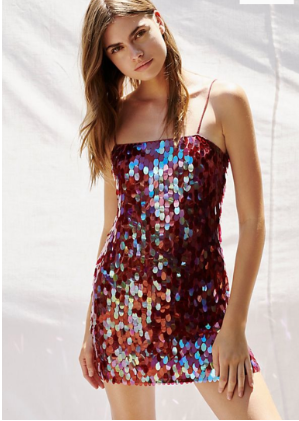
Jan 15, 2019 | Columns, Fashion
By Kristine Fu ’19
With the end of winter break, we are reminded that the annual Snowball Dance is approaching! This year, Snowball is on Saturday, January 26th. It is a night to relax, hang out with friends, and take pictures in our beautiful dresses and handsome suits. For some, dress shopping can be overwhelming; there are dozens of dress websites and endless choices for cut, color, decals, etc. If you don’t know where to start, I would recommend perusing through the Revolve website or the Nordstrom site, both of which have a wide variety of options and brands. H&M ($) offers a wide range of styles, from elegant crushed-velvet dresses to eye-catching sequin dresses. For monochromatic bodycon dresses, check out Lulus ($$). Their wrap and skater dresses are typically solid colors, without flashy details. On the other hand, Zara is your go-to for avant-garde styles, such as studded dresses, snake print, and silk chain-print. Free People ($$$) is known for its unique designs with ruffles, lace, jacquard fabrics, and classy floral prints. Consider Rent the Runway ($-$$$) if you are interested in wearing haute couture like Chanel or Versace for less. This company is also a practical option since you will likely only wear the accessories and dress once a year.
The final recommendations for finding the perfect outfit: 1) For those who shop online, be sure to buy your dress early! Avoid the panic when your dress arrives the day before January 26th and ends up not fitting right. 2) Dress for confidence! Your dress is a form of self-expression, so you should feel confident and comfortable in whatever you choose.









